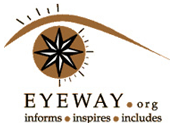Software Developer Makes Corona Virus Statistics Website Accessible for the Blind and Partially Sighted
A Boston-based software developer wanted to make COVID-19 stats accessible He created a website that would be easily readable by electronic braille readers and other assistive devices used by the blind and
partially sighted.
Tyler Littlefield, a software developer based in Boston, has created a database of COVID-19 statistics meant to be accessible to the visually impaired.
Called
CVStats.net,
the site organizes up-to-date COVID-19 data in simple charts specifically designed to be legible to a range of aid devices the visually impaired use to access websites.
For Littlefield, and many other people with visual impairments, trying to stay updated during the COVID-19 pandemic has been a challenge because many of the commonly shared charts and graphs are inaccessible, including those from the CDC and Department of Public Health.
“For many people with various types of disabilities, graphics and the information conveyed in them is hard to read and understand,”
Littlefield told
Vice.
“I believe in the idea of open data, data that everyone can access to
help make informed decisions. Finding this lack, I created CVStats to
present the
data to users in a straightforward way, free of ads, click-through news articles and graphics.”
One of the main obstacles in making COVID-19 information more accessible are the conventions of modern web design. With a profusion of autoplay videos, pop-up windows, and animated inserts, many modern websites make it difficult for braille embossers to scan a webpage and convert its content into a braille
printout.
“Clutter is the enemy of tactical legibility,” Naomi Rosenberg of the accessibility firm Lighthouse told Vice.
“For each of these, a blind reader is at the mercy of the designer, writer, or educator to produce quality graphics, concise image descriptions, or properly formatted tables,” Rosenberg said.
One possible alternative to visual graphs are ‘sonification curves,’which translate graph lines into rising and falling sounds to try and convey a similar sense of magnitude, something that an aid device won’t be able to do
without simple and accessible data.
Another challenge, according to Sassy Outwater-Wright, Executive Director of the Massachusetts Association for the Blind and Visually Impaired, is that
many healthcare facilities don’t post clear or accessible information about their policies.
For instance, some drive through testing sites only allow private vehicles, not taxis or other commercial vehicles, which would be important for a visually impaired person who can’t drive themselves to know before planning a visit.
“The moment that I heard everything was going drive-thru I kind of had a cringe moment because, other than in the hospital, there’s really no other way to access that testing, and for many in our community, including
myself, who are immunocompromised, that puts us at a much higher risk,” Outwater-Wright
said.
“We don’t get the benefit of staying in our car, we don’t get the
benefit of trying to continue to social distance. We have to go in.”
Source

Facebook comments